If nutritionists, TV show hosts and magazine articles are telling you differently on what to eat for good health in the long-term and you’re completely confused by it all, don’t worry. Here’s the ultimate list of foods put together just for you, so that you don’t have to look elsewhere for the lowdown again. We have divided these Super Foods into Six different categories and presenting them to you, which can make a dramatic difference to your health and attitude to life.
Medical experts and the U.S. Department of Agriculture (USDA) recommend that we eat a lot of lean meat, vegetables, whole grains and fruits. No problem there, but let’s narrow that down a bit. Which fruits are recommended and which aren’t?

Read on to find a comprehensive and interesting list of easily-found foods that are tasty and good for your health. By eating these interestingly cooked, you can have a healthy heart, kick off the flab and give your immune system the boost it deserves. We’ve grouped these healthy foods according to their food types as follows:
1) Best Fruits to include in your Diet:
Overall, fruits are good for health as they boost our immunity, are rich in fiber so they keep us feeling full for a longer time, increase our energy levels and nurse us back to health. Some of the most easily found and healthiest fruits are apples, blueberries and bananas.
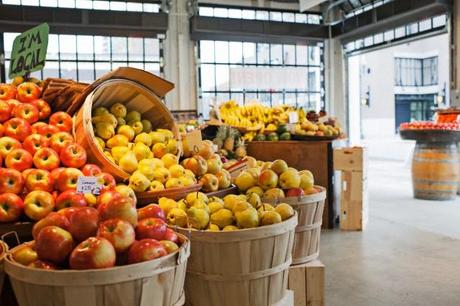
Apples: With a rich fiber content, it gets rid of bad cholesterol and is also antioxidant and anti-inflammatory in nature. You can eat them raw with the skin on, dried, baked as in muffins or in a pie.
Blueberries: This fruit too is rich in antioxidant compounds, and Vitamins C and E. They contain carotenoids and flavonoids that protect the heart and promote the memory, heart and urinary tract to function better. They also contain high levels of vitamins C and E. To get the best out of blueberries, add them to your bowl of yogurt or cereal or make a yummy drink of blueberry smoothie or make healthy blueberry muffins with flaxseeds and soy.
Bananas: Being rich in potassium, bananas keep your blood pressure at an optimal level and helps with digestive and muscular functioning. They are fiber-rich, so they give you a satiated feeling and prevent you from overeating. Eat them sliced with cereals and yogurt or blend them with milk to make a great smoothie or shake.
2) Include Legumes in your Diet:
All kinds of beans are nutritious and serve as a good substitute for meat. If you want to eat nutritious meals, you can safely eat three cups of beans per week. They are rich in protein, fiber, folate, iron, complex carbohydrates, calcium, magnesium, Vitamin 6 and potassium.
They are slower to digest than meat because they are rich in fiber and water, so they keep you feeling full for longer. By eating beans each day, you cut down calories while feeling full too, which helps in weight loss.
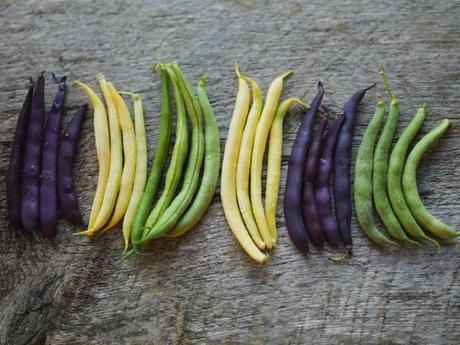
Beans also have a low sugar content, so eating them will not make your insulin in your bloodstream spike up and make you feel hungry. The best kinds of beans that will keep you healthy are black beans, kidney beans, lima beans, pinto beans and navy beans.
Black Beans: These legumes are easy to cook and easily available too. They keep you feeling full and energized for long. They also contain Omega-3 fatty acids, which encourage cardiovascular health. It also contains antioxidants which neutralize the free radicals in our body cells and protect us from problems relating to the heart, eye, memory and moods, besides also boosting our immunity.
You can eat them in burritos or burgers.
Kidney Beans: Rich in magnesium and potassium, kidney beans help control blood pressure. Their fiber content reduces bad cholesterol and keeps your heart healthy. It is also rich in protein and iron, making it a good vegetarian substitute for chicken and fish. You can make them a part of your vegetable dishes, or add them to salads, dips and sandwiches.
3) Ways to Incorporate more Vegetables in your Diet:
It is widely known that vegetables are rich sources of energy, fiber, and they reduce cholesterol levels, and protect you against all kinds of cancers. They also reduce the risk for heart disease, stroke, diabetes, kidney stones and osteoporosis.

Tomatoes: The goodness of tomatoes can never be underestimated. Rich in a bevy of vitamins–A, C and K–it also has an abundance of the antioxidant, lycopene, which contributes to reducing inflammation and cholesterol levels, which ultimately gives you a healthy heart.
Eat them raw or chop them and add them to any food you eat. Or make heart healthy tomato soup.
Broccoli: Also cruciferous, it is known for its anti-cancer properties and reduces inflammation, while boosting immunity. Being rich in fiber, it keeps you feeling full for long while reducing the risk of heart disease and blood pressure levels.
Eat it steamed or stir-fry it, or add it to salads and omelets.
Spinach: It wouldn’t be wrong to call spinach the king of vegetables as it is full of the most important nutrients–Vitamin A, iron and calcium that keep you looking and feeling healthy. It is also rich in folate which helps the body manufacture red blood cells and prevents any damage to the fetus during childbirth.
Add it to your omelets, salads or bake it with fish and white sauce.
Red Beets: This vegetable is rich in folate and is good for pregnant and menopausal women. They also help in metabolizing amino acids and have cancer-fighting properties. Additionally, they reduce the risk of heart disease.
To get the best out of them, roast them or add goat cheese to red beets and enjoy this healthy dish.
Sweet Potatoes: Rich in potassium means they are good for your bones and to reduce your blood pressure. They also reduce your chances of getting a stroke. Eating the skin also helps you stock up on fiber which gives you a feeling of satiation.
To eat them, boil, mash or bake them and add them to baked dishes or soups.
Kale: A cruciferous vegetable, eating Kale will certainly do you a power of good because it is rich in fiber, antioxidants and Vitamin K, which helps blood clots and the growth of new blood cells.
Eat it in a salad or bake it with a little sea salt and extra virgin olive oil or make a soup with it.
Eggplant: You can get completely energized by eating just this vegetable because it contains all the B vitamins. It also has a lot of fiber content and is rich in antioxidants that will protect your brain cells and control your lipid levels.
It can be eaten roasted, baked or with a dip.
Brussels Sprouts: Yet another cruciferous vegetable, Brussels Sprouts contain glucosinolates, sulfur compounds that reduce the risk of suffering from prostate, stomach, lung and breast cancers.
They can be eaten sauteed or roasted.
Pumpkin: This low-calorie vegetable is also rich in Vitamin A and fiber. It also contains an abundance of beta carotene that prevents heart problems.
Cook it or eat it from a can. Or, make pumpkin soup.
4) Get more Lentils in your diet:
This food type packs a punch with its abundance of protein, iron and fiber. This low calorie food is highly nutritious and is nice to eat with spreads, salads and crackers. You can rely on lentils to give you the following healthy benefits: They reduce your blood cholesterol due to their high levels of soluble fiber, folate and magnesium, and so lower your chances of suffering from heart disease and stroke.
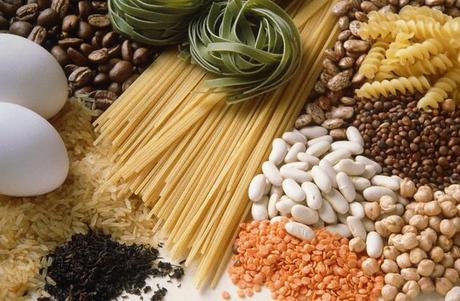
They prevent you from suffering from Irritable Bowel Syndrome; aid in digestion and stabilizing blood sugar; increases energy due to the presence of fiber and complex carbs. Again due to its rich fiber content, it helps in weight loss.
They are best eaten in soups, with rice or in vegetable burgers.
5) Nuts and Seeds that are good for you to eat:
Nuts and seeds improve your health by being rich in dietary fiber. It promotes good and regular bowel movements by adding bulk to your stools. It slows down the digestion rate so that you continue to feel full for longer.
Nuts also encourage fat intake because they contain alpha-linolenic acid, a form of Omega-3 fatty acid. Consequently, your brain works better, your red blood cells are nourished and healthy and your body can fight inflammation. Nuts also prevents disease and weight gain and lower your risk for heart disease and type 2 diabetes.
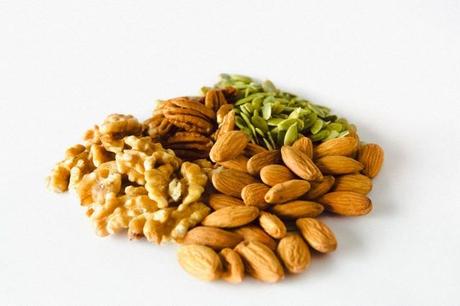
You can add nuts and seeds to your soups or smoothies or add them to your meal. Also, add them to a hot or cold cereal, sandwiches, salads or wraps.
Walnuts: The monosaturated fat present in nuts makes it healthy. It is good for maintaining a healthy heart. It is also rich antioxidants.
You can include nuts and seeds in your diet by adding them to yogurt, cereals and bread.
Almonds: Almonds are rich in proteins, monounsaturated fat and calcium. So, eat a fistful of them every day and develop a healthy heart. You can choose the plain or dry-roasted variety. Slice them and garnish them on salads or make almond milk.
Flaxseeds: Since seeds are rich in plant protein, flaxseeds have a high level of plant-originated Omega-3 fatty acid called Alpha-Linolenic acid (ALA) which are good for the heart. To eat them, grind them and then add them to your bowl of cereal, oatmeal, or to smoothies, salads or breads.
Chia Seeds: Just like flaxseeds, chia seeds too are rich in ALA, the plant Omega-3 fatty acid that can protect you from inflammation, heart disease and arthritis. However, you do not need to grind or refrigerate these seeds. To incorporate them into your diet, garnish whatever you eat–salads, smoothies, bread or cereals–with these seeds.
6) Importance of Whole Grains for Healthy Diet:
Whole grains are unrefined. This means that their germ and bran have not been removed after milling. This makes them good sources of fiber. Being rich in fiber, it protects from various ailments lon cancer, such as controlling blood sugar, lowering your risk for heart disease, diabetes, stroke, colon cancer, Alzheimer’s disease, diverticulitis, asthma and hemorrhoids. It also helps with weight loss, acne control, gall and kidney stones and provides relief to patients of Irritable bowel syndrome.
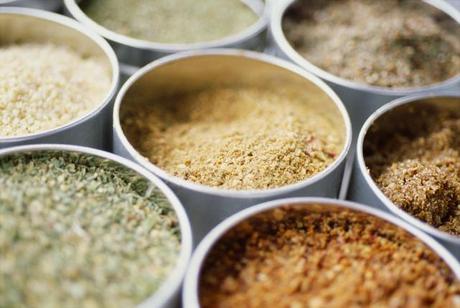
Apart from the goodness of fiber, whole grains also contain several nutrients like potassium, selenium and magnesium. You can eat whole grains as brown rice, popcorn, whole wheat bread or buckwheat pancakes.
Whole Wheat Bread: The process of milling grains strips them of dietary fiber, B Vitamins and iron. By switching from white bread to whole wheat bread, you can increase your intake of this grain and make yourself a whole lot healthier. You can include whole grains in your diet by making sandwiches with this bread and enjoy the difference.
Quinoa: Quinoa is both a whole grain and a whole protein because it has all the building blocks for muscles and metabolism–amino acids. In its raw state, a cup of this whole grain contains 522 mg of Omega-3 fatty acids. It stands out for being flavorsome, light and nutty. You can cook it and eat it as a good alternative to pasta. Or eat it for breakfast as porridge or add it to salads.
Steel-Cut Oatmeal: This whole grain comes to you with all the goodness of good health. It is rich in a soluble fiber called beta-glucan, that lowers cholesterol levels, your risk of heart disease, diabetes, controls your blood pressure and your weight. To make steel-cut oats a part of your daily diet, start teh day with a bowl of this oatmeal with milk and water and garnish it with walnuts and cinnamon for extra flavoring and blood pressure control benefits.
Bulgur: Despite the fact that about five per cent of bulgur bran is removed during milling, it is still considered a whole grain. It packs a punch with its abundance of fiber, B Vitamins, magnesium and iron. It is very low on the glycemic index, which means that it will help keep your insulin and blood glucose levels steady. Also known as cracked wheat, a cupful of this whole grain comprises 75% of your daily dietary fiber quotient. All you need to do is to add it to your soups or salads.
If you thought eating healthy food means a lot of effort and changing your eating habits entirely, this article is sure to have set your mind at rest on that. Now, there are no doubts or obstacles in your path. So, try some of the eating tips given here and tread a path that healthy folks take.

